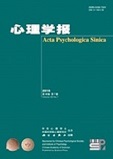It is an important way to initiate a certain emotion regulation process using words with the meaning of emotion regulation. However, there is still a lack of a standardized emotion-regulation word system in the international field of emotion regulation, which may lead to the mismatch between the selected words and the target strategies or the incomparability of the results from different laboratories. Therefore, we select, classify, and evaluate many emotion-regulating words and establish a standardized emotion regulation word system, named “Chinese Emotion Regulation Word System (CERWS)”. Firstly, the correlation degree between emotion- regulating words and various emotion-regulating strategies is evaluated, and the words are screened and classified into different strategical categories according to the results. Secondly, each word's six attributes, including pleasure/valence, arousal, motivational tendency, dominance, familiarity, and writing complexity, were determined for the system. Thirdly, using the sentence unscrambling paradigm, we test the moderating effect of the implicit emotion regulation strategy induced by the CERWS on the negative emotion. Results showed that: (1) 149 emotion-regulating words can reflect five emotion-regulating goals (acceptance, distraction, cognitive reappraisal, expression suppression, and venting) and neutral goals; the system has good reliability and internal consistency. (2) the implicit cognitive reappraisal and expression suppression adjust the valence and arousal of negative emotion, and the implicit attention distraction reduce the arousal of negative emotion. These findings suggest that the CERWS has satisfactory reliability, and the system's words can be used to initiate emotion regulation effectively.




